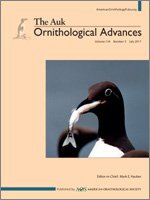Research from the intensively studied northern temperate and boreal regions dominates avian reproductive phenology studies. However, in most other areas, long-term, high-quality phenological datasets are not available, limiting our ability to predict how reproductive timing may respond to rapid climate change. Here, we provide novel methods for combining conventional and nonconventional observations to understand phenological patterns in birds across a southern continent. Observations from egg collections, bird banding, nest record schemes, and citizen science were combined to determine egg-laying phenology for ∼50% of Australia's mainland breeding species. We investigated start, peak, and length of avian egg-laying periods (1) derived from different data sources, (2) across tropical, subtropical, desert, grassland, and temperate biomes, and (3) comparing 2 representative temperate regions of the northern and southern hemispheres. We found that start and peak egg-laying dates calculated from single-visit observations of young or eggs resulted in similar dates as those from more accurate multi-visit nest observations. This demonstration suggests that future studies aimed at assessing changes in the timing of breeding in response to climate change can utilize such observational data. This will significantly increase sample sizes, rather than restricting such analyses to just intensively tracked nests, for which accurate laying dates are available. We found that egg-laying phenology varies between biomes (tropical, subtropical, desert, grassland, temperate), with birds in the desert biome having the earliest peaks of egg-laying. Finally, the length of the egg-laying period differs significantly between hemispheres. The southern temperate zone species have extensive egg-laying periods and many species breed year-round in marked contrast to the highly predictable, springtime breeding in the north. Therefore, avian phenological patterns and documented responses to climate change from the well-sampled, but highly seasonal, northern hemisphere may not be transferrable across the globe.
How to translate text using browser tools
19 April 2017
Characterizing opportunistic breeding at a continental scale using all available sources of phenological data: An assessment of 337 species across the Australian continent
Daisy Englert Duursma,
Rachael V. Gallagher,
Simon C. Griffith

The Auk
Vol. 134 • No. 3
July 2017
Vol. 134 • No. 3
July 2017
big-data
breeding biology
breeding phenology
Macroecology
natural history collections
population monitoring




